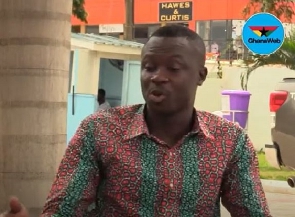- Home - News
- TWI News | TV
- Polls
- Year In Review
- News Archive
- Crime & Punishment
- Politics
- Regional
- Editorial
- Health
- Ghanaians Abroad
- Tabloid
- Africa
- Religion
- Election 2020
- Coronavirus
- News Videos | TV
- Photo Archives
- News Headlines
- Press Release
Opinions of Tuesday, 29 September 2009
Columnist: Boateng, P. K.
Kakum Forest – Millions More Can Be Raked In
“Huge tourist arrivals overwhelms staff of Kakum Park” (Ghanaweb of 24 September 2009).
I was in the facility in August 2007 and I could see the great potential the Forest has in terms of generating much more revenue for the government. But much needs to be done. The following are some observations and suggestions. (Pardon me if within the last two years some of the suggestions I am making have already been implemented):
1. It was unbelievable that a facility that collects perhaps millions of cedis annually for the government still operates using 19th Century administrative practices and norms. Everything in the Park is done manually - memos and reports to the management of the Park are handwritten, tourists’ names are written in book registers etc. As a matter of urgency all operations of the Park must be computerized and a database of all visitors kept to enable the Park to send a complimentary note to each visitor (by means of an e-mail) just to say “Thank you for visiting our Park”. The success of any tourism strategy is measured by whether a tourist will repeat his/her visit. The Park must also have its own website which potential visitors can access and read more about what it offers – especially a photo of the Canopy Walk.
2. The road to the Park – right from Pedu Junction to the Park is appalling. I could count not less than 100 potholes of various sizes on the road. Again for a facility that collects millions of cedis, this is unacceptable. The Park’s management responsibility of ensuring the safety of all visitors must include the minimization of the risk of motor accident on the road to the Park. The management can negotiate with the government to use some of the revenue it collects to maintain the road if the Ghana Highway Authority does not consider that road a priority. The state of the road will certainly not make any visitor repeat a visit.
3. Signage to the Park is poor. Right from Pedu there is no clear sign that directs visitors to the Park or whilst in the Park there is no sign that one is in a protected forest zone. The internationally accepted “jumping antelope” signage signaling wildlife crossing within the Park is absent on the road from Pedu to the Pra River and beyond. Thus wildlife (like snails, tortoises, snakes etc) can be killed unintentionally or caught illegally.
4. I also expected some parts of the Park (especially along the road to Praso) to be fenced to protect the animals against poachers. The lack of fencing makes poaching easy.
5. The shabby and tattered clothes and unkempt outlook of the coconut sellers that met me after the grueling Canopy Walk was nauseating and a disgrace to our nation especially when most of the visitors I met were from Europe, the US and Canada. The management of the Park must remember that in tourism, little things count! I recommend that there must be a decent dress code for all the people who work or do business in the Park. A smart Kente undercoat on a white shirt (with a Kente bow tie) and a matching black or grey trousers or skirt (as seen in some hotels) will bring respect and professionalism to the entire Park’s staff including the coconut sellers. It also appears that the Park’s management has nothing to do with the coconut selling business so coconut that had been harvested weeks earlier was being sold to the poor visitors. Concern for the safety of the visitors must include what they eat and drink inside the Park. The Park’s management must take responsibility for this.
6. I was also disappointed with the souvenirs being sold at the Park. Did I see Bibles and other religious items being sold? Certainly yes! And there were not even variety of that. Could the management not be imaginative to display and sell wood carvings, sculptures, Kente stoles and other things that depict Ghana’s culture? They can enter into partnership with the carvers who ply their trade in Accra to go to the Park and do business. Such souvenirs are money spinners in tourism and Kakum Park management seem not to know.
7. The involvement of the local community in the Park’s economic activities (apart from coconut selling) seemed to be nonexistent. A little cultural group from the villages to drum, dance and entertain visitors could put little income into the pockets of the village folks – the unemployed young men and women in the villages around the Park.
My overall impression of Kakum Park is that it has the potential to even surpass the Himalayas as tourists’ destination but that potential is not being exploited to the full. The management may perhaps explore the possibility of getting some international natural facilities management consultants to lift the place up.
P. K. Boateng (The writer is a chartered management accountant and a consultant on Corporate Strategy and Public Finance Management. E-mail Address: pkboateng@gmail.com)









